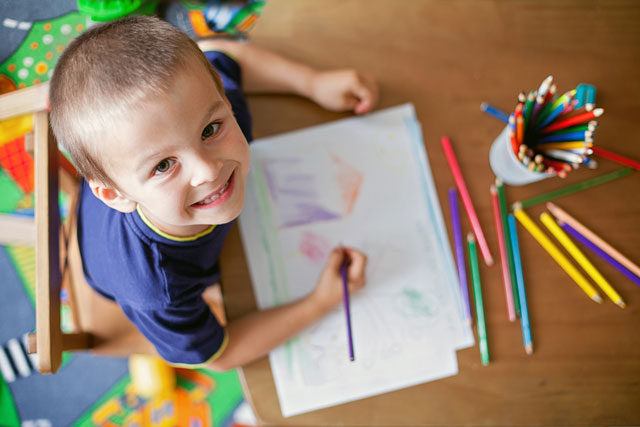When you have a child with disabilities or developmental delays in your class, you will be considering how to make your day-to-day classroom life more accessible to them. One way of doing this is through materials adaptation. Materials adaptation is when you change an activity, manipulative, or toy slightly to meet the needs of a child with a disability or developmental delay.
Activity to be adapted
Consider this example: You have prepared an art activity encouraging children to choose construction paper and crayons to draw what they see after a nature walk. Janeke, a 4-year-old in your class, struggles with fine motor control. When you watch him at this station, he often drops the crayons and struggles to keep the paper from moving around on the table while he draws. He gets frustrated and throws his materials on the floor before leaving the table.
Just a few changes
Teachers can help! To adapt this activity for Janeke’s needs, you can:
- Put paper on a clipboard so it doesn’t move around on the table as he draws.
- Substitute chunky crayons for the thin ones so Janeke can get a solid grip on the crayons for drawing.
Materials adaptation does not need to be substantial or expensive. Often the best adaptations are easy ones that allow the child to fully participate in the activity of drawing with his friends. Janeke is now side-by-side with his friends at the art table, drawing and talking. His materials might look slightly different, but he is engaging in the same activity, drawing, and is practicing the same skills: grasping a crayon, selecting colors, and talking about things they saw on the nature walk.
Goal: Access to learning with friends
It is important to note that materials adaptations do not remove a child from his or her small group or class. In fact, it is the opposite! Materials adaptations allow a child greater access to the daily activities of the class. We want Janeke learning near his friends, not separate from them, because he is a part of the group and classroom community. Learning with friends allows Janeke to experience “peer modeling,” where his friends can show him how to do something. Janeke can also take on the role of model in the classroom as he engages in the activity.
Learning from others
Reaching out to Janeke’s therapists opens a world of options for future adaptations. Janeke is working with an occupational therapist (OT), who gave him adapted utensils and plates with grips on the bottom to use for lunchtime. Reaching out to Janeke’s OT and asking questions about how you can carry over some of the skills he is learning during OT will help Janeke make even more progress in your class.
Now you know more about materials adaptation, you can continue to better support children with disabilities and developmental delays in your classroom.

Natalie Danner
Dr. Natalie Danner is a Content Specialist for the Illinois Early Learning Project. She has worked in university-based early childhood teacher preparation programs in Nebraska, Oregon, and Connecticut and as an early childhood teacher and school leader in New York City and Arizona. She earned her Ph.D. in early childhood special education from the University of Illinois at Urbana-Champaign.
Biography current as of 2021


